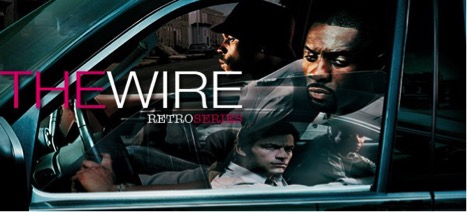
Abstract
When David Simon’s acclaimed HBO series, The Wire, presents Baltimore Police Department’s wiretap detail as a model of effective policing, no one thinks–or should think–that Simon proposes to fix Baltimore’s socioeconomic problems with surveillance technology. The Wire’s realism is not mimetic insofar that the eponymous wire that establishes the show’s aesthetic unity is not presumed to work in an artwork as it would in life. It solves the problem of intelligibly narrating reified social relations because detectives make cases from the fragmentary evidence the wiretap records, but neither technology nor good police work can fix the social problems of a world run for profit. In contrast to approaches that legitimate the autonomy of technology by documenting and theorizing it, this paper contends that the problem to which The Wire gives form is not technology as such, but the problem of action, particularly the waning viability of political action defined as intentional action for the sake of public good.
Keywords
Intentional action, Reification (or, real subsumption under capital), Politics and public good, Aesthetic autonomy, Technology
Resumen
Cuando la aclamada serie de HBO de David Simon, The Wire, presenta los detalles del espionaje telefónico del Departamento de Policía de Baltimore como un modelo de vigilancia policial efectiva, nadie piensa -o debería pensar- que Simon propone solucionar los problemas socioeconómicos de Baltimore con tecnología de vigilancia. El realismo de The Wire no es mimético en tanto que no se asume que el cable homónimo que establece la unidad estética del programa funcione en un trabajo artístico como lo haría en la vida real. Resuelve el problema de la inteligibilidad narrativa reificando las relaciones sociales ya que los detectives arman los casos a partir de la fragmentada evidencia recolectada en las grabaciones telefónicas, pero ni la tecnología ni el buen trabajo policíaco pueden solucionar los problemas sociales de un mundo con fines de lucro. En contraste con las aproximaciones que legitiman la autonomía de la tecnología documentándola y teorizando acerca de esta, este trabajo sostiene que el problema al cual The Wire da forma no es la tecnología como tal, sino el problema de la acción, particularmente la disminución de la viabilidad de la acción política, definida como acción intencional por el bien público.Palabras clave:
Acción intencional, Reificación (o, subsunción real bajo el capital), Política y bien público, Autonomía estética, Tecnología
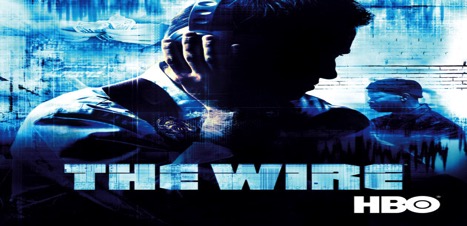
“From here to the rest of the world”[1]
Telephone Imagines Action in David Simon’s The Wire
Marlo Stanfield, an antagonist of David Simon’s TV crime drama The Wire (2002-2008), walks into a grocery store to buy a bottle of water and pockets a lollipop in plain sight of a security guard. The guard takes offense and follows Marlo outside to shame the drug dealer for treating a working man as if he were invisible. His censure presumes that the trifecta of values to which he appeals for leverage–a job, family, and the sanctity of a Sunday morning–are incontrovertible. “You want it to be one way,” Marlo checks him several times before he finally declares, “but it’s the other way.”[2] Unlike the guard, Marlo has both authority and muscle at his disposal.[3] He is an antagonist of a type at least as truculent as Avon Barksdale’s soldier and as little prone to sentiment as Stringer Bell’s businessman. We infer from what we already know about his character that “the other way” must be Marlo’s way and are assured of it promptly by the arrival of Marlo’s enforcers and the ensuing execution of the guard.[4]
The Wire warrants our reading of Marlo’s character: he wants power and for that reason, as Proposition Joe observes, it “ain’t easy civilizing” him.[5] Joe’s civilizing mission proceeds under the auspices of the New Day Co-op, a cartel of erstwhile competitors who now protect the truce under which co-op members in good standing have access to Joe’s narcotics wholesaler. Joe recruits Marlo for the co-op to subordinate his will to the outcome of a vote, but fails because Marlo has no need to trade his sovereignty for the advantages of a social compact as long as he is able to protect his person and interests himself. Nevertheless, even though Marlo’s will to power is resolute, his sovereignty is limited. To conclude that Marlo gets his way in the encounter with the guard, for example, we would have to overlook the fact that his order of execution is not an act as free as the theft of a lollipop had been. Marlo would appear weak to his enforcers were he to tolerate the guard’s finger wagging in his face with impunity. The killing of the guard goes a long way to profile Marlo as a ruthless killer, but the sequence of events that for the guard goes fatefully “the other way” is Marlo’s way only in as much as it is dictated by the exigencies particular to and arising from a position of power. The Wire confirms there is nothing in the killing that speaks to the singular will of Marlo as an individual when it makes a point of letting us know that the guard’s missing persons file is not legible to Detective Freamon as “one of Marlo’s” missing bodies.[6] The guard is not a plausible victim because we cannot give a reason why Marlo would have him killed until we know why he had him killed. We can offer an explanation only once we stop thinking about what Marlo does in terms of actions that are free or that have objectives and begin to look at them as reactions conditioned by necessity or chance.
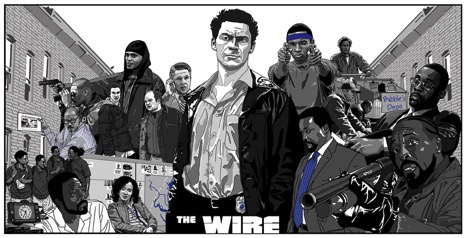
And yet it appears that we can respond to Elizabeth Anscombe’s “Why did he kill him?” question by giving a reason for Marlo’s action: he kills the guard because he wants power and he knows that he must not appear weak if he wants to maintain it. The certainty of Marlo’s retribution keeps people from crossing him. Anscombe’s Intention (1957) describes intentional actions as those “to which a certain sense of the question ‘Why?’ is given application; the sense is of course that in which the answer, if positive, gives a reason for acting.”[7] She makes plain the difference between a prediction and intention with this explanation because a prediction is justified by reason for thinking it true and intention by reason for acting, but–she acknowledges–an explanation so formulated lacks clarity when we need to distinguish between reasons and causes.[8] As a matter of fact, we often give causal explanations for action: we present the cause as a reason when we explain that a person spilled coffee because she got startled, for example. Whereas it is quite clear that spilled coffee is likely an effect of some prior cause rather than of intent in action, reasons–intuitively transparent usually–resist easy systematization partly because they are not posited exclusively in terms of some future state of affairs but may be drawn from the past as Anscombe’s example of a subject who kills a man because he killed her father shows us. In an effort to distinguish between reasons and other explanations, Anscombe notes a difference between reason and motive. In the situation I sketched above, she gives the murder of the subject’s father as a reason for action and revenge as motive. The motive may help us interpret the subject’s action, she says, but “revenge is not some further thing obtained by killing him, it is rather that killing him is revenge.”[9] For the purposes of this essay, I will take the moment in Anscombe’s account of intentional action when she calls for “some further thing” as provisionally coterminous with Donald Davidson’s formalization of intentional action in “Actions, Reasons, and Causes” (1963) that is now referred to as the Anscombe/Davidson thesis.[10] The point I wish to isolate is that reasons account for the intentional content of actions that may be causal under other descriptions.
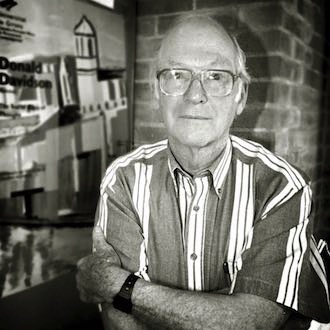
Donald Davidson
When Marlo gives his execution orders, he intends to act in the sense that he knows he has ordered to have people killed. Moreover, he has intentions in action insofar that he kills with the objective to maintain himself in power.[11] He explains that he wants to bring Omar out of retirement to kill him because a “crown ain’t worth much” if he gets “his shit took.”[12] In other words, Marlo knows what he is doing and why he is doing it, which presents a problem for the critic arguing that Marlo’s actions are best described as reactions conditioned by necessity or chance. Anscombe’s distinction between motive and intention helps us here because it considers whether Marlo’s death toll amounts to “some further thing” under another description like penal action or an act of war. Some “further thing” under another description might qualify the killings as an action with intentional content in a sense distinct from intending to act or intention in acting. For example, Stringer Bell and Proposition Joe aspire to have their activities understood in terms of business or governance even if their business is drug trade and governance amounts to racketeering. It is difficult to attribute to Marlo’s actions any intentional content other than killing or any reason except for the motive constituted by his will to power, however. Crown pretensions aside, Marlo is generally too literal-minded to be comfortable with the intentional content of his actions. We see this when he travels to the Caymans to see his money, dismantles the New Day Co-op, and–in the series finale–when he deserts the company of Baltimore’s politicians, lobbyists, and developers to find satisfaction in a street tussle. He shows us how a character superbly capable of intention and intention in action falters when it comes to intentional action that enables him to act from reasons rather than causes and how this impedes his capacity for social action.
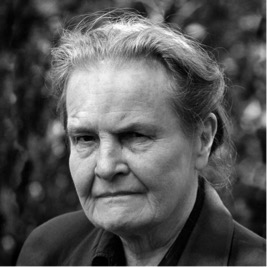
Gertrude Elizabeth Margaret Anscombe
Let us remember that Marlo gets “schooled” in a poker game right before he provokes the guard. The vignettes detailing the fortuities of Marlo’s encounter with the guard and of his poker game are developed separately after the teaser sequence frames them together briefly before the episode’s opening credits, but the pairing suggests that Marlo’s way is subject to certain constraints. I argued earlier that one of those constraints is necessity and the flip side of necessity is chance. We also saw that the guard’s death follows from a chance encounter in which Marlo’s whim plays out to force his hand without accomplishing anything that might be construed as his way. Marlo wants to be a sovereign, but the power that puts him in a position to scorn a compact is a function of a set of relations that he cannot escape. He cannot get his way in the street game any more than he can get it in a game of poker. It is evident because he loses, but were he to win, we could not rightly say that he got his way because a game does not allow players to formulate objectives other than those prescribed by the game. Mayor Royce’s poker game makes these conditions clear to us: if we concede provisionally that Royce makes poker serve his aims, we have to follow up with a rebuttal that the activity that loosely makes use of poker rules dispenses with the element of chance when Royce’s partners fold on good hands to make it possible for the mayor to accept bribes as winnings.[13] Royce can have his way in a poker game only when he is no longer playing a poker game.

Marlo Stanfield played by Jamie Hector
The card game that precedes Marlo’s encounter with the guard invites us to combine queries about the meaning of Marlo’s remark and understanding of agency that we bring to the interpretation of this scene. What we first take for a rebuff from a man accustomed to getting his way can also be read as the resentment of a man who acknowledges that external forces shape him. The Wire challenges us to account for the meaning of a work that supports interpretations of Marlo’s remark as both an assertion and a negation of agency and stages it as a problem of language that obscures what Marlo means by “the other way.” The set of values to which the guard appeals establishes the referent for “one way,” but we cannot decide from the context set up by the teaser whether “the other way” thwarts only the guard or applies to Marlo as well. We can chalk up the ambiguity to deixis and account for it with theories drawing on structural semiotics or deconstruction, but these approaches explain why ambiguity exists not what the work means and we would have to read against the interpretive model recommended to us by The Wire to embrace them. The detectives on the wiretap detail do not revel in the polysemic possibilities the image of a clock face affords to them; they look for meaning and an interpretation that gives it pragmatic precision. They decode the locations where Marlo’s crew meets from the clock faces and are able to coordinate a drug bust because they know the locations ahead of time, but the most significant achievement of their investigation is marked by their ability to use encoded communications exchanged over a surveilled phone network to substantiate the charges of criminal conspiracy against Marlo and arrest him even though he is not present at the drug sale intercepted by the police. Wiretap and stakeouts provide the detectives with the evidence that the photo of a clock face Marlo sends from his phone constitutes an action with criminal intent and one that comprises delegated tasks.
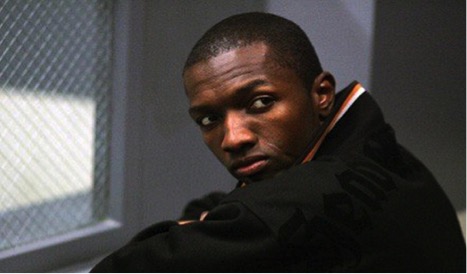
Jamie Hector
The Wire models for us a reading approach that secures meaning by discovering intent. To charge Marlo with the conspiracy to purchase a shipment of drugs on the evidence of a photo message depicting the face of a clock is to attribute intent to his action. When Marlo sends a picture of the clock, he sends a sign that communicates a location, but the act of sending that photo message also constitutes a speech act that orders a wholesale purchase and transport of narcotics. The Wire emphasizes the importance of actions that can be accounted for by reasons, but this contradicts the world depicted in the show which consistently yields to causes over reasons. Simon’s interpretive model does not resemble structurally the object it aims to explain. But how does this model help us ascertain the intent of Marlo’s remark when it appears to sustain contradictory readings? The police interpret a literal action, i.e., the sending of a photo, as an intentional action, i.e., trafficking in drugs, but the challenge before us does not immediately appear to us in those terms if we look to Marlo as the agent whose intent ought to be decipherable in his cryptic utterance. We must begin by acknowledging that Marlo means anything only to the extent that his fictional character is legible much like the face of a clock is legible and that we cannot turn to him to establish intent any more than we would to a clock. Only an agency capable of intent, like an author or a director, can guarantee us that The Wire is the kind of object that means something or that parts of it, like Marlo’s remark, mean something notwithstanding the object itself but legible in its construction. By this I mean that Marlo as a literary character has no agency or psychology to inform an intent, though, of course, both can be deployed and figured in the construction of his character to testify to its meaning. The Wire resolves the ambiguity of the phrase and the tension between contradictory readings by making “the other way” legible as Marlo’s way insofar that Marlo’s might-is-right riposte to a rebuke served to him by the guard from a moral high ground does not contradict society’s values but reflects them. Marlo pays no heed to a working class plea because society pays it no more than lip service. He shrugs off the bonds that bind no one and, in effect, refutes the values of a society that does not operate in keeping with the beliefs and obligations we profess on its behalf. This resolution makes sense of both the guard’s and Marlo’s relation to “the other way” and of the discontinuity between professed intent and action that materializes as self-profiling in characters who are unable or unwilling to act intentionally.
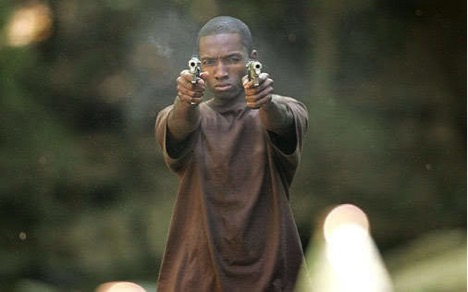
Unlike David Simon, whose thoroughgoing representations of a social world forfeited to rational regulatory systems find ways to imagine and problematize intentional actions, Robert MacDougall examines representations of communication networks in the early 20th century fiction entirely within the framework laid out by Thomas Haskell’s and Stephen Kern’s studies of causality. Both critiques deal with depicted worlds in which reasons yield to causes, but Simon stages interventions of reason that help us diagnose the failures of a social world organized on the causal model whereas MacDougall satisfies himself with causal explanations. MacDougall reports that “it is difficult to apprehend how unnatural–how monstrous, to some–region- and nation-spanning companies and technologies of communication once seemed.”[14] Wire thrillers, a genre of pulp fiction featuring the telephone and the telegraph as its topoi, exploited a pervasive fear of encroachment on the American homestead before AT&T intervened with a publicity campaign that “embraced the wire thrillers’ metaphorical conflation of technological networks, corporations, and the American nation, but reversed the polarity of their images, celebrating the very sorts of social and economic integration that the authors of the wire thrillers most feared.”[15] MacDougal argues that new technologies reconfigured social space by means of action at a distance that “drained” the local “sources of meaning and order–the family, the sect, the small town” of “causal potency” and ushered in a “national unity through commerce.”[16] He defines action at a distance broadly as “the ability to act in one place and affect the lives of people in another” and then gives to technology a narrowly causal interpretation as the conveyor of “causal potency.” I cannot disagree with MacDougal on points of fact that the early 20th century saw grids of communication and corporate structures develop rapidly, that nationalist sentiments abounded, or that individual actions yielded to individual uses of technology that were uniform, legible, and that lent themselves to profitable exploitations nationwide. However, even if we accept MacDougal’s conclusion that the same networks that served expanding markets facilitated national unity, his argument ought to give us pause because an analysis of action at a distance that reduces it to causation hinders our ability to account for political action.
When we conceptualize action at a distance as a function of new technologies, we focus on actions that technology makes possible over a distance or devote ourselves to phenomenology of actions to which telecommunication technology gives rise. In other words, we commit ourselves to the task that AT&T boasted of in 1909 proposing to invent “uses of the telephone and convince people that they were uses.”[17] The academic version of this undertaking requires us to explain the significance of telecommunication technologies which we find in a world transformed by them. MacDougal, for example, argues that the wire that connects us to sources of “causal potency” fosters a “national unity.”[18] The American experiment in representative democracy is predicated on the possibility of delegating action to elected officials in the state or federal capitols, but if the argument that national unity takes root via commerce seems presently more plausible than the legacy of political thought and action dating back to the Federalist Papers, then the transformation that occurred has less to do with national unity than with subsumption of politics by market mechanisms.
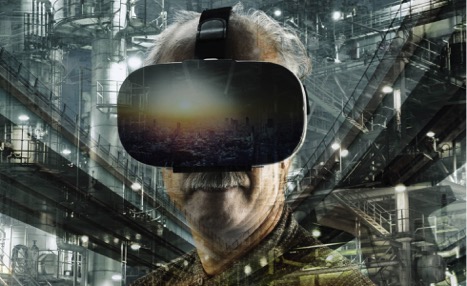
Action at a distance is conceptually important to MacDougal because telecommunication technologies produce a world that can be explained by causation even though action is not exhausted or even constituted by causal explanations. People act at a distance when they vote, stage social protests, wage wars, or start revolutions. If we did not believe this, we could not think that dumping crates of tea into Boston Harbor constitutes a speech act addressed to the British Parliament about the relation of rights to duties with respect to representation and taxation and would have to take it at face value as an act of breaking and entering, larceny, and vandalism. We need telecommunication technologies to convey causal effects over distance, but whereas causes have effects regardless of our understanding, there is a class of acts that must have their intent understood before they can obtain their proper effects. The act of sitting down in a restricted section of a Montgomery bus or a Greensboro lunch counter, for example, can cause a vigilante reaction or a penal action under a Jim Crow law, but to understand the meaning of that act as a civil protest against an unjust law, we must apprehend its intention.
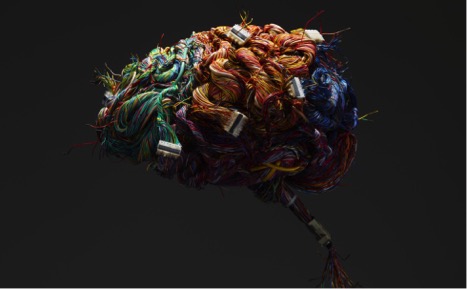
MacDougal does not distinguish between causes and reasons, so the point that he makes by discounting local institutions as “drained” of meaning and by vesting distant sources with “causal potency” misleads us if we conclude that it is possible to decipher meaning from more potent causes or from causes altogether. He claims only that local institutions have very limited powers of causation whereas the wire gives access to terminals that have lots of it. This amounts to saying that the phone and the telegraph give people a seat at the craps table and MacDougal supports this figure of speech literally by giving stock market investments and gambling as examples of action at a distance.[19] Had he observed a distinction between causes and reasons, he could argue that under certain conditions, market conditions for example, causation establishes an interpretive regime that evacuates considerations of meaning. Nevertheless, we have in David Simon’s The Wire a wire thriller of sorts that successfully examines the inroads by which causation usurps action. The show chronicles several fictional operations in which the use of the wiretap leads to arrests of top rung heroin traffickers as well as large drug and weapons seizures. Major Crimes, the unit that runs the eponymous wiretap, emerges as a paragon of effective police work in a department otherwise overwhelmed by the directives from the city hall to reduce crime. Mayor Carcetti wants to fix the city by strengthening its tax base, but he needs to lower the crime rates to attract investment capital that will generate jobs that will expand the tax base. From a more cynical point of view, he needs to make good on his mayoral campaign promise to lower crime rates and find developers for a project that will bear his name by the time he launches a gubernatorial campaign half way through his term as mayor. Law enforcement does not make laws, set policies, implement programs, allocate funds, or create jobs, so there is a limit to what the police can do in neighborhoods that have few employment opportunities outside of drug infrastructure. As a result, the department compensates for its inevitable inefficacy in the war on crime by responding to the pressure of performance statistics as if they were ends in themselves. This results in practices like point of sale drug busts that are valuable to police departments because they document and quantify police work even though they do not cut off the supply chain or decrease the circulation of drugs on the street.

György Lukács
David Simon stages a problem that was theorized by Karl Marx as a commodity relation and formalized for social regulatory systems by György Lukács’s reification theory.[20][21] A capitalist society organizes its labor force to maximize profits and increase the dependence of labor on capital. This is done by breaking up the production process into repetitive tasks that can be completed in coordinated stages by a series of deskilled workers or machines with greater efficiency and cost effectiveness than by skilled workers who marshal their resources independently and organize their labor from start to finish. Cooperative production produces alienation because workers do not understand or need to understand how the process of production works or how the final product is put together. When the organization of social life follows suit under the dictates of capital, it is no longer possible for people to apprehend the totality of all the parts necessary for the functioning of their lives or to grasp their relations. The Wire’s wiretap detail models police work that escapes reification to the extent that it asserts a measure of autonomy to build its cases, but even if its example could reform the way police work is done, no gold standard in policing can fix the city because that is a task for policy makers not its enforcers.
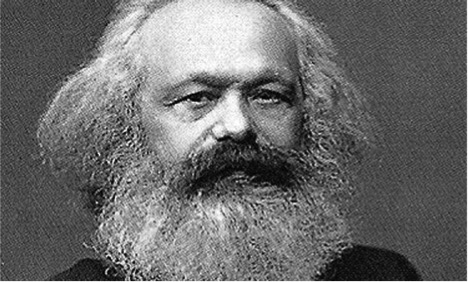
Karl Marx
We witness Mayor Carcetti mistake investment capital for civic reform and a policy problem for a policing problem. Major Howard “Bunny” Colvin, a district commander for the Baltimore Police Department, and Frank Sobotka, the treasurer for the Baltimore chapter of the International Brotherhood of Stevedores, act on the same presumptions out of frustration. Both men recognize that they are unable to realize their tasks with the means at their command so they overstep their authority to avail themselves of the means that make their actions consequential. It is not in Major Colvin’s power to stop drug traffic as long as the enabling conditions of supply, demand, profit, and a scarcity of living wage jobs persist, but he establishes zones of tolerated drug activity to lower the overall crime rate and restore the kind policing to the rest of his district that builds community relations. Sobotka’s union retains a fraction of its former membership, but it cannot secure steady work for its members or raise from their dues the kind of money that hires a lobbyist to line up the necessary backing to dredge the canal. He raises the requisite funds from smuggling contraband on the docks. When Colvin and Sobotka find the means to complete the tasks delegated to them, their deeds turn out to be criminal. Colvin oversteps his authority when he makes his own policy and, in effect, legalizes drugs; Sobotka’s efforts to raise funds for operational expenses in pursuit of investment capital implicate him in drug and human trafficking and homicide.
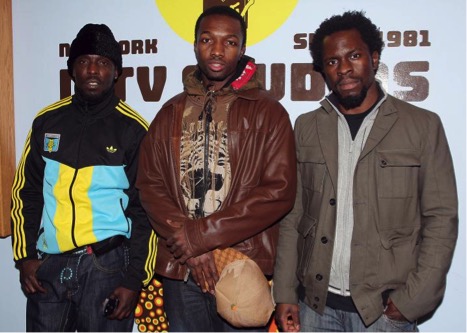
Senator Clay Davis delivers the most egregious illustrations of corruption and abuse of an elected office, but he is well connected and can be counted on to pursue private interests. Narratives of personal agency turn into cautionary tales in The Wire when an individual acts alone or takes responsibility for an act undertaken for the sake of the public good. Our confidence in democracy rests on the belief that its institutions count everyone and secure public good for all, but economically disenfranchised segments of the population constitute a structurally sound feature of a capitalist society because competition over scarce resources maximizes corporate profits, shapes public perception of underemployment as a solution to unemployment, courts capital investment solutions with municipal infrastructure and low taxes, etc. The city’s struggle with budget crises and crime indicates that access to living wage jobs qualifies as a matter of public good, but there are no adequate institutional means available to appointed or elected officials to protect the public good by easing endemic unemployment. Colvin and Sobotka act to promote the welfare of the people entrusted to their care, but despite their best intentions, they adopt solutions that incriminate them and criminalize the poor. Carcetti trades a public agenda for his own when the prospect of a governor’s seat suspends his commitment to the constituency of urban poor in order to project an image attractive to middle class county tax payers and campaign donors. His local agenda to make the city safe for investors begins to sound less like reform and more like talking points profiling a gubernatorial candidate. Carcetti no longer needs to figure out what actions would bring solutions to the problems of crime, unemployment, a meager and dwindling tax base, or the budget deficit; his campaign needs only tokens. A real estate development downtown supported by the mayor and citizens of Baltimore does make the city safe and profitable for at least one investor. It does not do anything substantial to fix the city, but speaks volumes for the mayor’s entrepreneurial leadership and civic engagement. The relationship of an elected city official to a token is the same as an appointed police official’s relationship to a statistical report and a school board’s relationship to a standardized test: the performance measure yields pride of place to a profiling tool.
The guard’s appeal to Marlo is futile, which contributes to the realism of the scene, but the logic of this appeal warrants a closer look. He begins justifying himself with his own version of categorical imperative: “I know what you are. Now, I ain’t stepping to, but I am a man. And you just clip that shit and act like you don’t even know I’m there.”[22] Marlo responds with a curt “I don’t,” but because he looks right at the guard as he pockets the lollipop, we know that the tension that emerges between them is not about mere perception but about how each reads the other. Marlo responds to the guard’s “I know what you are” in kind by recognizing the guard for what he is instead of treating him as he ought or as the person the guard aspires to be. The presence of a person imposes a moral obligation to recognize in another a self-regulating rational being whom we must not use as means to our ends, but Marlo does not respond to this imperative because he prizes sovereignty secured by power and scorns the kind of freedom that is realized by a self-imposed obligation. He taunts the guard because he is not afraid of him. However, Marlo’s recalcitrance to yield to anything but necessity helps us realize that unless we grant to the guard the recognition required a priori by categorical imperative, we are hard pressed to acknowledge the autonomy of a man who hires out his capacity to be recognized as an autonomous individual.
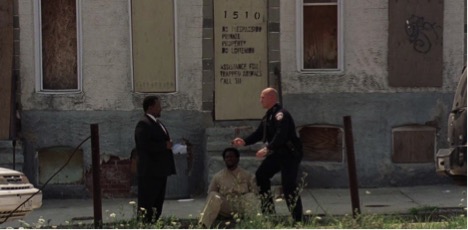
The guard affirms inalienable humanity for the an alienated worker, but the claim has no force other than pathos. Marlo ignores the obligations of categorical imperative and so does the city government that pursues deliverance from private capital. The guard continues to justify himself by defending his values. He concedes that the job itself is nothing to brag about, but he is proud to be employed: “You think I dream of coming to work up in this shit on a Sunday morning? Tell all my friends what a good job I got? I am working to support a family, man.”[23] His pride is vested not in the work he does, but in the identity of a law abiding citizen who holds down a job and raises a family. We regret that men like him are lost to drug trade and imagine that jobs can save them, but we succumb to nostalgia when we forget that the guard endures his job for the sake of an identity that betrays him to alienation and sustenance wages. Marlo is provoked by this sentimentality and recognizes the guard as a dupe of his ideals. Marx argues in The Critique of German Ideology that the values the guard embraces as his own are values of the ruling class passing for universals. This is precisely what is at stake in Marx’s critique of Feuerbach’s idealism. Feuerbach conceptualizes essence in modern terms like “the conditions of existence” and “the mode of life and activity,” but Marx points out that the conditions of proletarian existence and its mode of life, which he characterizes summarily with the 14 hour workday, ought to be overcome rather than propagated as class essence.[24]

Both Royce and Carcetti cultivate relationships with investors who underwrite projects that create jobs, but without addressing living wage, alienation of labor, or long term goals pertaining to urban development and maintenance of public projects, their civic agendas bow to corporate agendas of their business partners. Carcetti wants to make Baltimore safe for investors to develop a tax base, but he cannot claim to represent workers or protect the public good by making the city safe for the exploitation of labor. Even if we allow that instead of being unwilling or uninterested, Baltimore politicians are not able to mobilize appropriate resources to dredge the Baltimore Harbor and that they are not in a position to dictate to their investors terms that would make a difference to West Baltimore neighborhoods, they are able to make Baltimore profitable to hobnobbing developers. It is probably easier to criticize politicians for failing to do what they ought but cannot do than it is to berate them for doing what they can but should not do. Both critiques reveal the organs of social infrastructure to be in the vice of capital; the first is a critique of causality, the second a critique of identity that demonstrates that agency is possible, even encouraged, as long as it aims for personal rather than public good.
[1] David Simon, “React Quotes,”The Wire, fifth season. Cutty, a released convict, counsels Duquan Weems, a high school dropout not old enough to get a job except on a corner selling drugs: “not everything come down to how you carry it in the street. I mean, it do come down to that if you gonna be in the street. But that ain’t the only way to be.… World is bigger than that.” When Dukie asks him, “how do you get from here to the rest of the world?” Cutty responds, “I wish I knew.” The scene runs from 17:32 to 19:15.
[2] David Simon, “Refugees,” The Wire, fourth season. The scene described is from the teaser before opening credits.
[3] We are conditioned to respond to a security guard as an authority figure, but Marlo’s petty theft challenges that authority. Later, during the reconnaissance work that precedes the execution, Chris Partlow informs Snoop that the security guard is not a cop moonlighting at the grocery store for extra pay, but a civilian working “full-time on this Mickey Mouse shit.” He means that the killing of the guard will not expose them to the consequences that a killing of a policeman would have and further undermines the guard’s authority.
[4] David Simon, “Refugees.” We find out that Marlo put a hit on the guard in a scene that comes twenty minutes after the opening credits and runs for 15 seconds. It is sandwiched between scenes from Pryzbylewski’s classroom and Bodie’s corner. We also learn that the security guard offended because he “talked back.”
[5] David Simon, “Not for Attribution,” The Wire, fifth season. The scene in which Marlo and Joe begin to discuss Marlo’s money in the Caymans begins approximately 43 minutes into the show. Joe’s remark comes at 43:47.
[6] David Simon, “That’s Got His Own,” The Wire, fourth season. Back at Major Crimes after he discovers twenty two bodies stowed in the vacant row houses, Detective Lester Freamon looks through missing persons files for candidates that could tie the bodies to Marlo. Herc notices a picture of a man, presumably in uniform, whom he takes for a cop. Freamon corrects Herc and identifies the missing person as a security guard, but sees no connection to Marlo. This exchange between Freamon and Herc runs from 20:47 to 20:55.
[7] G. E. M. Anscombe, Intention (Cambridge, MA: Harvard University Press, 2000): 9.
[8] Ibídem., p.15, 9.
[9] Ibídem., p. 20.
[10] Donald Davidson, “Actions, Reasons, and Causes,” in Essays on Actions and Events (Oxford: Clarendon Press, 2002): 3-19. Davidson’s formula to which I alluded states: “R is a primary reason why an agent performed the action A under the description d only if it consists of a pro attitude of the agent towards actions with a certain property, and a belief of the agent that A, under the description d, has that property” (5).
[11] G. E. M. Anscombe, Intention (Cambridge, MA: Harvard University Press, 2000): 1. Anscombe distinguishes between different senses in which we understand intention: “And we may be inclined to say that ‘intention’ has a
different sense when we speak of a man’s intentions simpliciter–i.e. what he intends to do–and of his intention in doing or proposing something–what he aims at in it.”
[12] David Simon, “Unconfirmed Reports,” The Wire, fifth season. This is the scene in which Marlo puts a hit on June Bug and Omar. It starts at 8:05 and ends at 9:10.
[13] David Simon, “Refugees.” The Wire, fourth season. Mayor Royce’s Texas hold ‘em starts at 33:36 and ends at 34:36.
[14] Robert MacDougall, “The Wire Devils: Pulp Thrillers, the Telephone, and Action at a Distance in the Wiring of a Nation,” American Quarterly 58, no. 3 (2006): 715.
[15] Ibídem., p. 716.
[16] Ibídem., p. 718.
[17] Ibídem., p. 719.
[18] Ibídem., p. 718.
[19] Ibídem., p. 725, 732.
[20] Karl Marx, Capital: A Critique of Political Economy Volume I (London: Penguin Books in association with New Left Review, 1990). See chapter 13 entitled “Co-operation”, pp. 439-454. Marx outlines how the capitalist mode of production, i.e., co-operative production, maximizes surplus value, makes itself indispensable, and imposes its despotic rule–as Marx puts it–on laborers: “Moreover, the co-operation of wage-laborers is entirely brought about by the capital that employs them. Their unification into one single productive body, and the establishment of a connection between their individual functions, lies outside their competence. These things are not their own act, but the act of the capital that brings them together and maintains them in that situation. Hence the interconnection between their various labours confronts them, in the realm of ideas, as a plan drawn up by the capitalist, and, in practice, as his authority, as the powerful will of a being outside them, who subjects their activity to his purpose,” pp. 449-50.
[21] Georg Lukács, “Reification and the Consciousness of the Proletariat,” in History and Class Consciousness (Cambridge, MA: MIT Press, 1972). I focused on the alienating effect of cooperative production on the workers when I quoted from Marx in the footnote above, but Lukács questions our capacity for political action that can create a social world independent from the dictates of capital. He declares that his aim in the “Reification and the Consciousness of the Proletariat” was ”to locate the point at which there appears in the thought of bourgeois society the double tendency characteristic of its evolution. On the one hand, it acquires increasing control over the details of its social existence, subjecting them to its needs. On the other hand it loses–likewise progressively–the possibility of gaining intellectual control of society as a whole and with that it loses its own qualifications for leadership,” 121.
[22] David Simon, “Refugees,” The Wire. These lines from the opening teaser are spoken by the guard at 2:38.
[23] David Simon, “Refugees,” The Wire. These lines are delivered at 3:16.
[24] Karl Marx and Friedrich Engels, The German Ideology (Amherst, NY: Prometheus Books: 1998): 66, 307. Marx writes in the introduction that “Man is in the most literal sense of the word a zoon politikon, not only a social animal, but an animal which can develop into an individual only in society” (2), but he begins the critique by declaring that so far “men have always formed wrong ideas about themselves, about what they are and and what they ought to be” (27). Addressing himself to Feuerbach as the first exponent of contemporary German ideology, Marx criticizes him for attending to a human being as “‘an object of the senses,’ not as ‘sensuous activity’ because he [Feuerbach] still remains in the realm of theory and conceives of men not in their given social connection, not under their existing conditions of life, which have made them what they are, he never arrives at the actually existing, active men, but stops at the abstraction ‘man’” (46). In other words, Marx believes that Feuerbach is mistaken to study human beings as natural phenomena, i.e., as objects of the senses, because such studies do not account for action of which we are capable and that makes of us historical beings. The consequence of this mistake is that we essentialize as constitutive those features of our social world that require from us action to reform them. Marx recalls a passage from Feuerbach’s Philosophie der Zukunft in which Feuerbach argues that “the being of a thing or a man is at the same time its or his essence, that the determinate conditions of existence, the mode of life and activity of an animal or human individual are those in which its ‘essence ‘ feels itself satisfied…. Thus if millions of proletarians feel by no means contented with their living conditions…. then, according to the passage quoted, this is an unavoidable misfortune, which must be borne quietly.” Simply put, theoretical knowledge seeks to understand what we observe, whereas the kind of understanding Marx pursues calls us to action (66).

